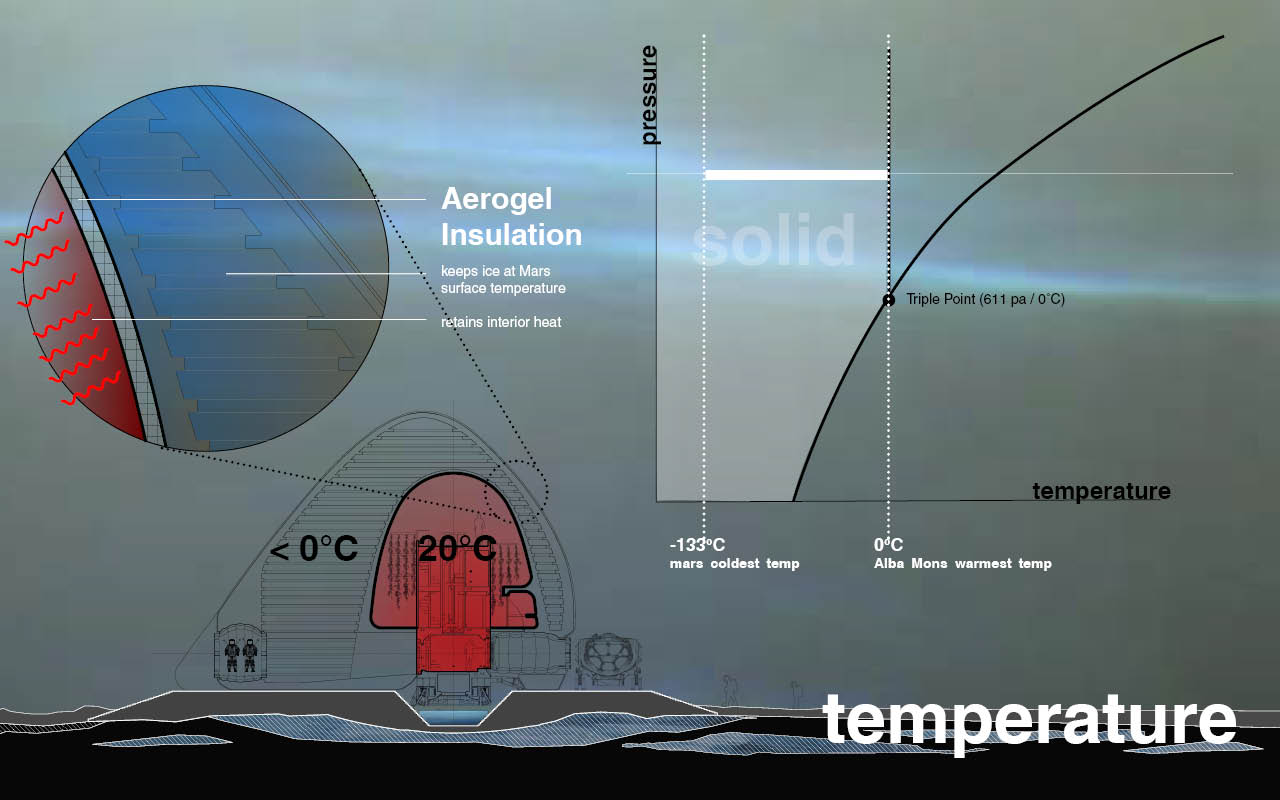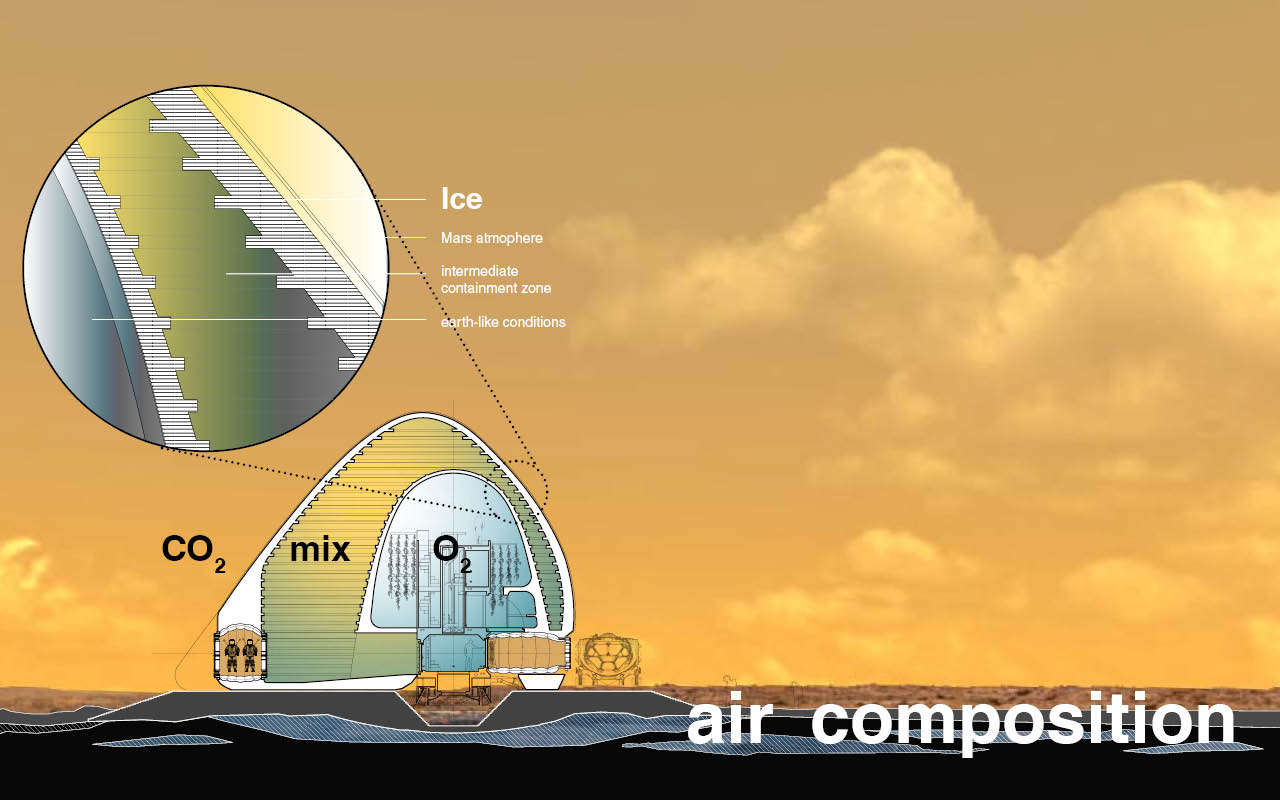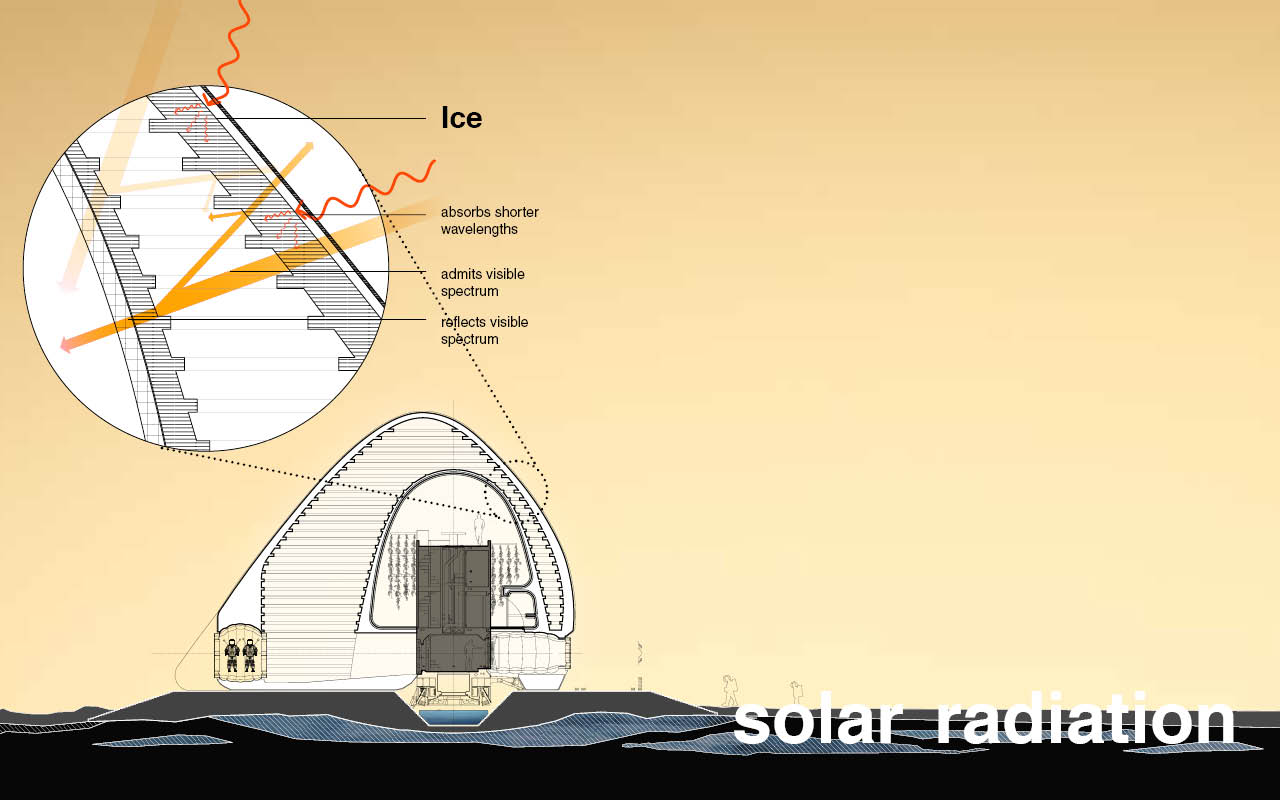
Water on Mars
We now believe there to be an abundance of water in subsurface and exposed ice in the higher and lower latitudes. Site selection was determined by a multitude of parameters, including balancing access to a shallow ice table from the surface (within 20cm-1m), with temperatures that remain below freezing throughout the Martian year.
map data from the 2001 mars odyssey gamma ray spectrometer

Why Water?
Water's unique absorption spectrum absorbs high energy short wavelength radiation making it an effective radiation shield. At the same time it allows light in the visible spectrum to pass through creating a unique daylit interior.
READ MORE about the absorption properties of water ice.

Using the Physics of Phase Change
The key to harvesting and using water on Mars is understanding its it's phase change in different pressures and temperatures.
Water ice is found beneath the subsurface of many of the northern latitudes of Mars. We're not sure how far down, but it may be as close as a few centimeters. Although the pressure of the Martian atmosphere is thin, the temperatures are cold enough to allow water to exist as ice beneath the pressure of the Martian regolith.

Using the Physics of Phase Change
If the subsurface ice is exposed to the thin Martian atmosphere with pressures around 600kpA, it will immediately sublimate changing from a solid to a gaseous state and disperse into the atmosphere.

Using the Physics of Phase Change
But if we were able to capture some of that subsurface ice, enclose it, and use the suns radiation to heat it, we could capture water in it's gaseous phase. In it's gaseous state we can start to collect and pump water vapor for use in the printing of a solid water ice structure.

Using the Physics of Phase Change
Inside the ETFE membrane, we've raised the overall pressure to 70kpA. A heated nozzel on the print head raises the temperature of H20 to be able to print in the liquid phase.

Using the Physics of Phase Change
Once the liquid H20 comes into contact with a printed ice surface, as the surrounding temperatures remain below freezing, H20 turns into and remains in a solid state.

Pressure / ETFE
A transparent and fully closed ETFE membrane reinforced with tensile Dyneema is deployed from the lander and inflated to form a pressurized boundary between the lander and the Martian exterior. This membrane, precision manufactured on Earth, is critical protection for the future ice shell, preventing any printed ice from sublimating into the atmosphere.
By creating an interior atmosphere around 70 kPa, similar to the space shuttle, and keeping the temperature at the surrounding Mars surface temperature which at this latitude will remain below freezing all year round, we ensure water will remain in it's solid state.

Pressure / ETFE
The Dyneema reinforced membrane is the only pressure boundary, taking the load of 70 kPa of interior pressure. The form of ICE HOUSE significantly reduces pressure stress responding to necessary pressure geometries. With the burden of the pressure vessel removed by this layer, the ice can remain as thin as gravitationally structurally necessary.
Analysis by L.E.R.A. (Leslie Robertson Associates) Consulting Structural Engineers

Temperature / Aerogel
A translucent hydrophobic aerogel layer with U values of 1 W.m2K and light transmittance of 66% is printed between the inner ice shell and the inhabited programmatic spaces to ensure thermal comfort. A porous substance, 99.8 percent empty space by volume, this additional lightweight material brought on the lander from Earth, serves an efficient air gap to create the necessary thermal break. The insulating layer enables the inner volume to achieve habitable temperatures without melting the ice structure beyond.

Air composition / Ice
Thermally separated from the habitat interior, the occupiable 'front yard' pocket just inside the outer shell provides a truly unique protected neutral zone that is not entirely interior or exterior; it enables the astronauts to experience the 'outside' without ever donning an EVA suit. This interstitial zone space demonstrates a new, liberating and revolutionary definition of living extra-terrestrially—one that celebrates the novelty and wonder of living on Mars. The ice offers a boundary that can mitigate exhaust from the habitat and manage the cyclical relationship between the exchange and transfer production of oxygen and CO2.

Solar Radiation / Ice
Ice absorbs the short wavelength radiation harmful to the inhabitants, but allows visible light to penetrate, and even reflect within the interior space.
Ice on Mars











